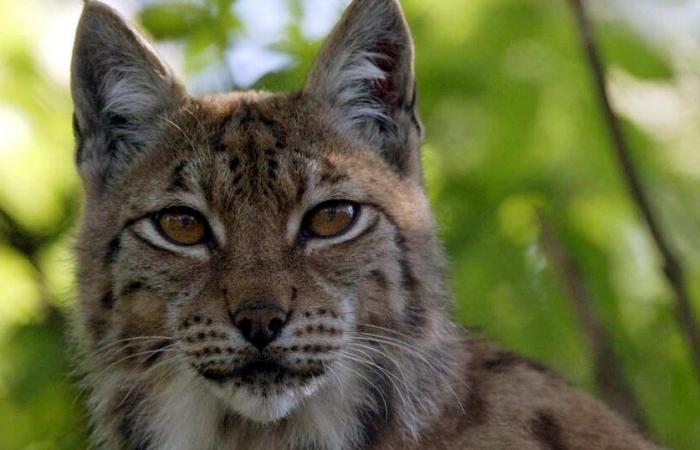
Switzerland is celebrating 50 years since the reintroduction of the lynx. It was in 1974, in the Creux-du-Van reserve, in the canton of Neuchâtel. A page in wildlife history commemorated on Saturday November 2 in Champ-du-Moulin (NE), during a public day dedicated to the animal.
The story of the reintroduction of the lynx is the story of a successful reintroduction. Today, 50 years later, around 70 lynx roam the Jura, and almost 200 lynx populate Switzerland. Yves Bongard, head of the Neuchâtel section of the Avenir Loup Lynx Jura association, participated in the lynx jubilee commemoration day on Saturday in Creux-du-Van, in the canton of Neuchâtel. He returns to this story in the RTS show Forum.
Yves Bongard states from the outset: at the time, the lynx was scary. Like the wolf today. But regarding the lynx, “we have made peace with this animal”, so much so that it has even become “a business card”, explains the manager.
We learned to admire the lynx. If we meet him today, well it's 'wow!'
“We are not afraid of the lynx because we know it. We have learned to admire it. If we encounter a lynx today, during a few rare moments, well it's 'wow!'”
A shift in sensitivities from fear to admiration which occurred over time, according to Yves Bongard. “I think that at a certain point people realized that ultimately, this beast is not dangerous, it does not pose a problem and it is even beautiful. And it is even fascinating.”
>> The interview in Forum with Yves Bongard, head of the Neuchâtel section of the “Avenir Loup Lynx Jura” association:
Towards peace with the wolf?
Concerning our conflictual relationship with the wolf, Yves Bongard does not wish to make any predictions about the future, even if he hopes that the Swiss can make peace with the wolf in the same way as they ended up accepting the lynx. To do this, we should above all “learn to know the wild, to make peace with it”, he claims.
Coexistence is the watchword.
He also recalls that the lynx kills a certain number of livestock each year, approximately 100 animals for Switzerland per year – predations that are paid for, with the breeders being reimbursed. A balance should therefore be found with the wolf too, suggests the manager.
“I sincerely think that with the wolf, we must learn to coexist. Coexistence is the watchword.”
The impetus of Archibald Quartier
A party took place in the heart of the Creux-du-Van reserve. An opportunity to pay tribute in particular to a central actor in this reintroduction: Archibald Quartier, a resourceful politician and great naturalist, but also fishing and hunting inspector for the canton of Neuchâtel.
>> Read our large format on Archibald Quartier: Archibald Quartier, a Neuchâtel figure in the service of nature
“At the time, his goal was to reintroduce the wildlife that existed in the lakeside villages. His first challenge was to reintroduce the bear.”
Except that politically, reintroducing the bear was not acceptable. But at that time there was a real political will to reintroduce a predator so that the forests could be reborn from their ashes. Bloodless forests, whose regrowth was made difficult by the abundant presence of ungulates, which feasted on young tree shoots.
“At that time, the Confederation sought to reintroduce the lynx. And it was driven by this desire of the Confederation that, in the canton of Neuchâtel, Archibald Quartier said: 'we are going to do it',” says Yves Bongard. And the people of Neuchâtel did it. It was 50 years ago.
Comments collected by Coralie Claude
Julien Furrer





